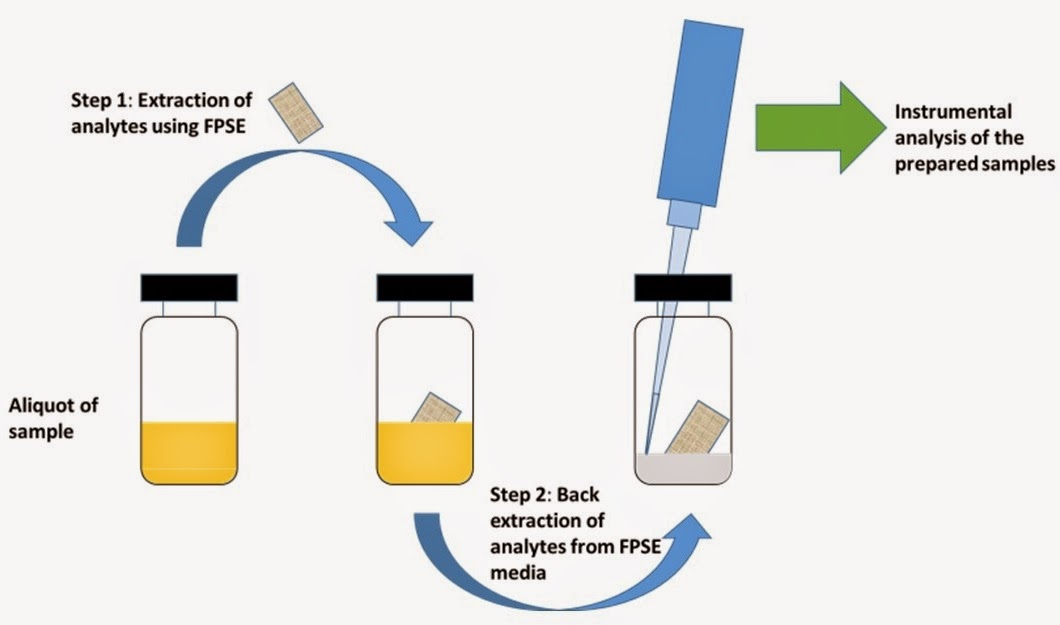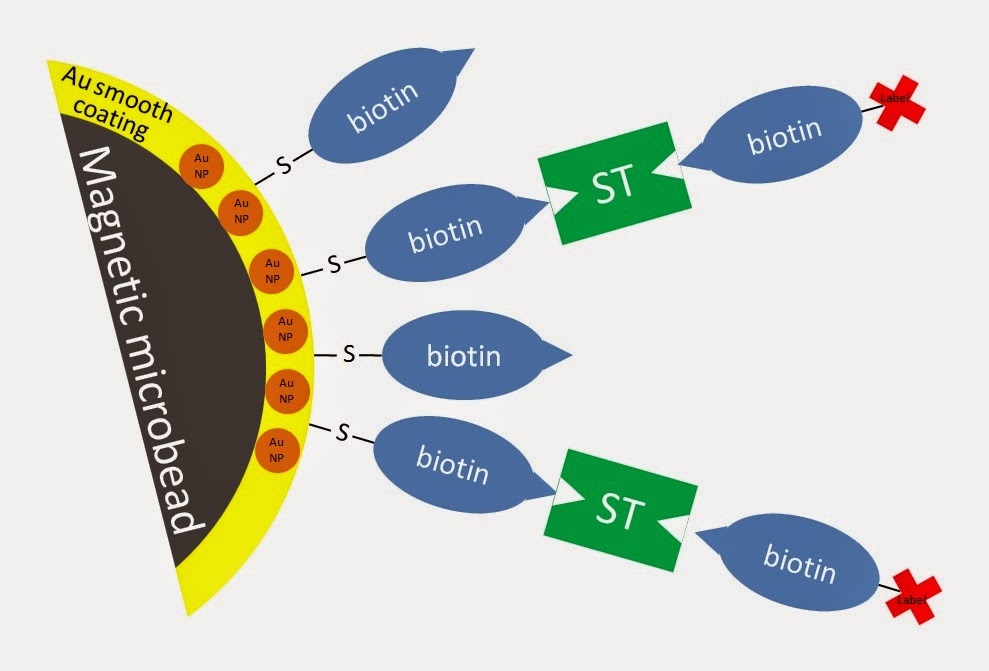Magnetic solid phase extraction coupled to ambient ionization mass spectrometry
Direct
coupling of microextraction techniques and ambient ionization mass spectrometry
opens a door to rapid, selective and sensitive analyses that are quite
attractive in the bioanalytical field. The use of nanoparticles (NPs) in this
combination may be problematic since they are not fully compatible with MS
although they have a great potential as sorbent in microextraction techniques.
In fact, these NPs may be blown during the ionization step causing the entering
of this material in the spectrometer.
Prof. Yu-Qi
Feng and coworkers have recently proposed the use of magnetic NPs (MNPs) for
this arrangement avoiding the previously mentioned shortcoming. The extraction
protocol follows the typical workflow of a dispersive solid phase extraction
(DSPE). In short, the MNPs are dispersed into the sample to favor the
interaction/isolation of the analytes. Afterwards, they are cleaned-up with an
appropriate solvent and finally recovered in a special capillary for
instrumental analysis. This step, the absence of a chemical elution, makes
different this approach from classic DSPE.
Simpler is
better
The magnetic
glass capillary employed for the MNPs recovery and introduction into the MS
interface is the core of the proposed coupling. It is lab-made and according to
the authors is simple to be constructed. It consists of a glass capillary of
2.2 mm of inner diameter which is closed at the end by burning. Finally, a
magnetic disk is attached to this end to aid the MNPs recovery.
The magnetic
capillary can be inserted in the desorption corona beam ionization source where
the plasma generated interacts with the MNPs surface desorbing/ionizing the
targets. During the whole process, the MNPs remain attached to the capillary by
magnetic forces.
Application
to bioanalysis
Our
colleagues have applied this combination to determine several antidepressant
drugs in human fluids using polypyrrole coated MNPs as sorbents. The limits of
detection as low as 0.2 ng/mL in urine indicate the potential of this idea.
We strongly
recommend our readers to go through that article published in The Analyst. You
will enjoy reading it and you will find additional information to this excerpt.
References:
(1) Magnetic
solid phase extraction coupled with desorption corona beam ionization-mass
spectrometry for rapid analysis of antidepressants in human body fluids. Link to the article
(2) Supplementary info of the article. Link to the info



Comments
Post a Comment